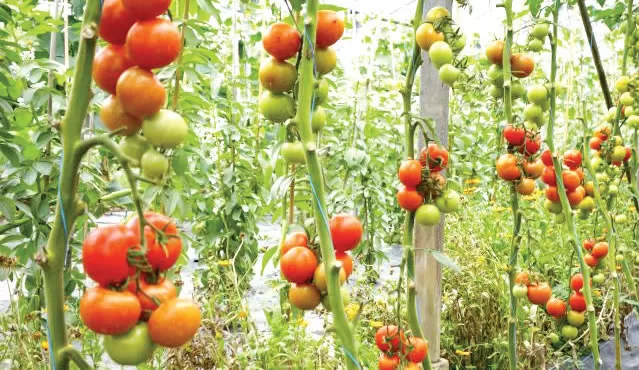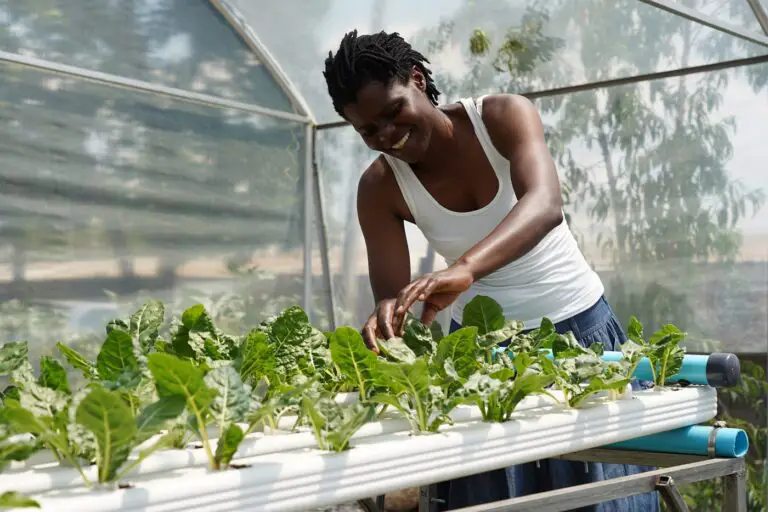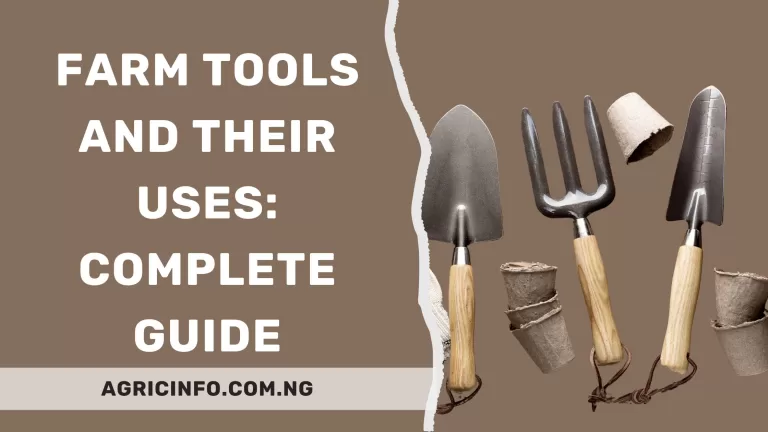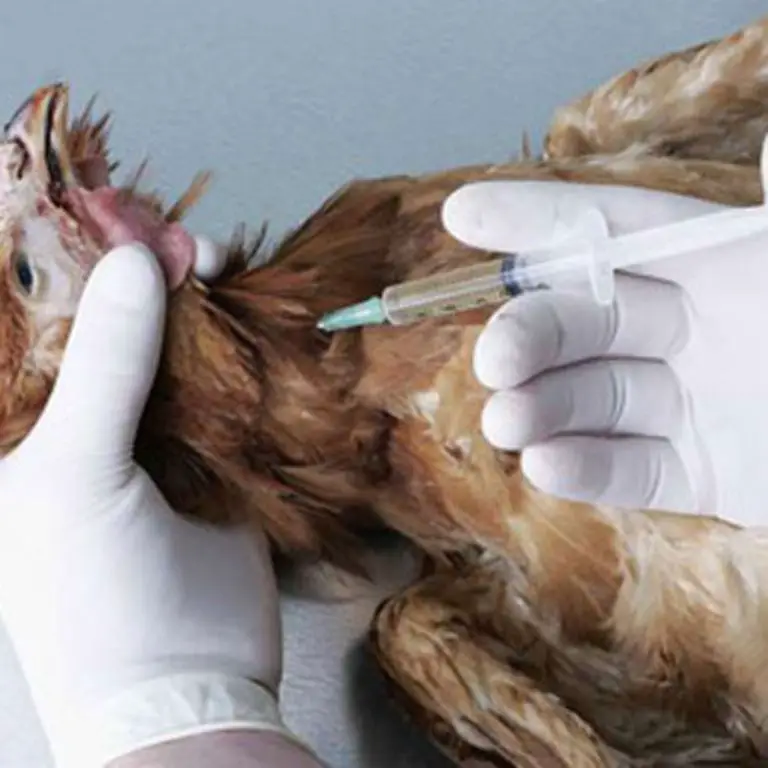Tomato Farming in Nigeria
Tomato farming in Nigeria encompasses all related activities, from sowing tomato seeds to harvesting and selling mature tomato fruits. In Nigeria, growing tomatoes is one of the agricultural ventures that anyone may engage in and benefit from rather well.
Arguably, tomato farming is growing tomatoes to harvest the fruits. Nigerians are just like everyone else in the world in that they consume tomatoes. People frequently eat foods containing tomatoes daily in Nigeria.
Tomatoes are a staple element in the majority of Nigerian soups and dishes. You can use it to prepare delicious meals such as jellof rice, stew, and many other dishes. It has nutritional content, serves as a skin exfoliator, and many others.
Tomatoes are produced anywhere in Nigeria, including Lagos, Kano, Jos, Abuja, Oyo, Ibadan, Kaduna, Owerri, Port Harcourt, Calabar, Ondo, Ekiti, Osun, and Benue.
With all these benefits, going into tomato farming is advantageous. In this article, we shall discuss tomato farming in Nigeria, why farm tomatoes, and many others.
Why Farm Tomatoes?
No farmer can go into tomato farming without knowing the benefits.
Below are the five (5) benefits of planting tomatoes.
● Nutritional Content
● Cost-effectiveness and Convenient
● Superior Flavor
● Environmental Friendly
● Versatility in Culinary Delights
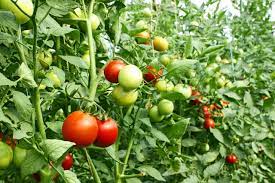
Nutritional Content
Tomatoes not only add vibrant colors to your plate but they are also packed with essential vitamins and minerals. Is your body craving vitamin C, potassium, or the antioxidant lycopene? Tomatoes have got you covered! Incorporating homegrown tomatoes into your diet ensures you and your family receive a healthy dose of these nutrients, promoting overall well-being.
Cost-Effective and Convenient
Purchasing tomatoes from the grocery store can be expensive, especially when their freshness and quality are questionable. By growing tomatoes on your own, you can have access to fresh, succulent produce suitable outside your back door. This not only saves you money but also eliminates the hassle of multiple grocery store trips.
Superior Flavor
There is nothing quite like the taste of a sun-ripened, homegrown tomato. Supermarket tomatoes often lack the sweet and tangy flavors that make tomatoes so beloved. Cultivating your tomatoes allows you to indulge in various flavorful, heirloom varieties that are difficult to find commercially. From cherry tomatoes bursting with sweetness to beefsteak tomatoes perfect for slicing, your taste buds will thank you.
Environmental Friendly
Tomato farming has a minimal impact on the environment compared to other crops. Growing your tomatoes gives you control over the use of pesticides and fertilizers, allowing you to adopt organic and sustainable farming practices. Plus, by eliminating the need for long-distance transportation, you reduce carbon emissions and contribute to a greener world.
5. Versatility in Culinary Delights
Tomatoes are incredibly versatile in the kitchen, making them a staple ingredient in countless recipes. Whether you’re whipping up a fresh pasta sauce, cooking jellof dishes, or adding a burst of flavor to a salad, tomatoes add depth and complexity to a wide range of dishes. By farming tomatoes, you have a constant supply of this culinary vegetable at your fingertips.
Other benefits include:
● It Helps to protect heart health
● It secures brain health
● It aids in combating metabolic syndrome
● It aids in preventing type 2 diabetes
● It deceased Cancer Risk
● Supports men’s fertility
● It aids immune function
Sweet Potato Farming in Nigeria 2024: Best Guide
Nutritional Component of tomatoes
Consuming tomatoes provides the following in the body:
| No. | Nutrients | Quantity |
| Carbohydrates | 4.86g | |
| Fats | 0.25g | |
| Calories | 22.5g | |
| Vitamin C | 17.1mg | |
| Vitamin K | 9.98mcg | |
| Protein | 1.1g | |
| Potassium | 296mg | |
| Folate | 18.8mcg |
How to Start Tomato Farming in Nigeria
Do you want to know how to start tomato farming? Here is the perfect guide.
Below are how you can start farming tomatoes even as a beginner:
● Select the right tomato Varieties
● Select good climate conditions
● Irrigation
● Providing optimal care
● Soil requirements
● Nursery Management
● Transplanting tomato seedlings
● Fertilizers Application
Select the Right Tomato Varieties
Selecting the appropriate tomato varieties is crucial for a successful harvest. We have different types of tomatoes, such as Cherry tomatoes, Roma tomatoes, grape tomatoes, heirloom tomatoes, Beefsteak tomatoes, and many others.
It would be best if you considered factors such as your climate, available space, and desired taste preferences before you choose the tomato varieties. Indeterminate varieties, such as “Big Boy” and “Beefsteak,” continue to grow and produce tomatoes throughout the season. Determinate varieties, such as “Roma” and “Celebrity,” tend to have a more concentrated harvest period.
Preparing the Soil and Planting
Starting tomato farming without preparing the soil before planting is like planning to cook without cooking gas or firewood. Tomatoes thrive in well-drained soil enriched with organic matter. They grow well when planted on loamy and clay soil.
Prepare the soil by removing weeds, loosening it with a garden fork, and incorporating compost or aged manure. Once the ground is ready, plant your tomato seedlings, ensuring they are placed at the appropriate depth and supported adequately with stakes or cages.
Equipment needed to plant tomatoes are:
● Garden Towel
● Gloves
● Space
● Pruners
● Irrigation equipment
● Watering can
● Tiller cultivator
● Spray pump or bottle, etc.
Select good climate conditions
Tropical environments are ideal for tomato plant growth. A temperate climate is not conducive to the growth of tomato plants. Tomato plants are frequently observed to flourish in warm nations such as Brazil, sections of the United States, Ghana, Nigeria, and so on.
Tomatoes grow best at a temperature between 20 and 28 degrees Celsius, yet heat-tolerant cultivars like Platinum F1 can still thrive in scorching weather. When temperatures are too high or too low, tomato plants lose their blossoms, and their fruits do not ripen.
Climate-controlled greenhouses are used in regions with unfavorable climates for growing tomatoes. It is possible to replicate the ideal growing environment for tomatoes in greenhouses.
Irrigation
In Nigeria, many tomato producers still depend on the rains to grow their harvest. Even though it might sound strange, unless you are a real farmer, tomato plants do not thrive during the wet season. Rain can also result in flower abortion and raise the risk of fungal infections in tomato plants. The best kind of irrigation for tomato production in Nigeria is drip irrigation.
Compared to other forms of irrigation, drip irrigation conserves a significant amount of water and makes sure that the water reaches the roots of the plants, where it is most needed. Fertilizers can also be applied to each plant’s roots by drip irrigation, either in small amounts daily or sporadically.
Compared to rain-fed farming, tomato productivity can rise by up to 150% with drip irrigation. Thanks to drip irrigation, I have seen tomato producers boost their yields by up to 200%.
Providing Optimal Care
Tomatoes require consistent care to reach their full potential. Water the plants regularly, providing enough moisture without overwatering—Mulch around the base of the plants to regulate soil moisture and prevent weed growth. Prune the plants to promote airflow and prevent diseases like Bacterial Wilt, Blossom End Rot, Light Blight, Verticillium Wilt, Early Blight, Powdery Mildew, and many others.
Finally, be vigilant against common tomato pests and diseases, such as aphids or blight, taking necessary preventive measures.
Soil Requirements
The ideal pH range for tomato agricultural soil is between 5.5 and 6.5. Dolomite or limestone should be added to the ground if it is very acidic.
For the soil to retain water well, it must also be rich in organic matter. Please avoid High-salinity soil.
Nursery Management
Almost every tomato farmer I have encountered in Nigeria nurtures their tomato seedlings in nurseries before putting them before the field.
Raised beds are used as tomato nurseries by Nigerian conventional tomato farmers.
To lessen the amount of sunlight, dried leaves or palm fronds are placed over the raised beds. Some farmers shade the nursery with shade netting. Utilize the 300–500 grams of tomato seeds as the seed rate for a one-acre tomato nursery.
Transplanting Tomato Seedlings
After being seeded, tomato seedlings are typically moved to the field in 21 to 30 days. It is best to harden off the seedlings before transplanting.
The field needs to be well-irrigated before the seedlings are transplanted.
Transplanting seedlings should also be done early in the morning when the sun is not as intense. Transplanting the seedlings in the evening, when the amount of sunshine has significantly decreased, is preferable.
Depending on the variety planted, the intra-row planting spacing should be employed between 30 and 60 cm. The recommended planting distance between rows is between 50 and 100 cm.
Fertilizer Application
For your tomatoes to yield well, there is a need to apply fertilizer to your tomatoes. In tomato farming, a fertilizer with a higher phosphorus content should be used during the pre-planting stage. Phosphorus aids in the development of plant roots. Larger, more developed roots allow plants to draw more water and nutrients from the soil, which increases production.
It is possible to apply fertilizers such as ammonium nitrate, potassium sulfate, dolomite, single super phosphate (SSP), calmag fertilizer, and diammonium phosphate (DAP). Moreover, bessentialNPK fertilizers may be used. Applying base dressing, a type of fertilizer, is crucial during the pre-planting phase.
High-nitrogen fertilizers should be applied while tomato plants are in the vegetative stage and have a lot of leaves. Urea, NPK 20:10:10, and nitrate fertilizers are a few examples of high nitrogenous fertilizers. The fertilizers increase the size of the leaves.
Large leaves help the plant better perform photosynthesis by allowing it to utilize sunlight. During the vegetative stage, calcium fertilizers such as calcium nitrate should be used. It is well-recognized that calcium aids in disease prevention in plants.
Additionally, it enhances fruiting and flowering. Using fertilizers with high potassium and calcium concentrations is advised throughout the flowering and fruiting stages of tomato plants. Please take note that you should hire an agronomic to evaluate the results of your soil test and provide you with advice on how to apply fertilizer.
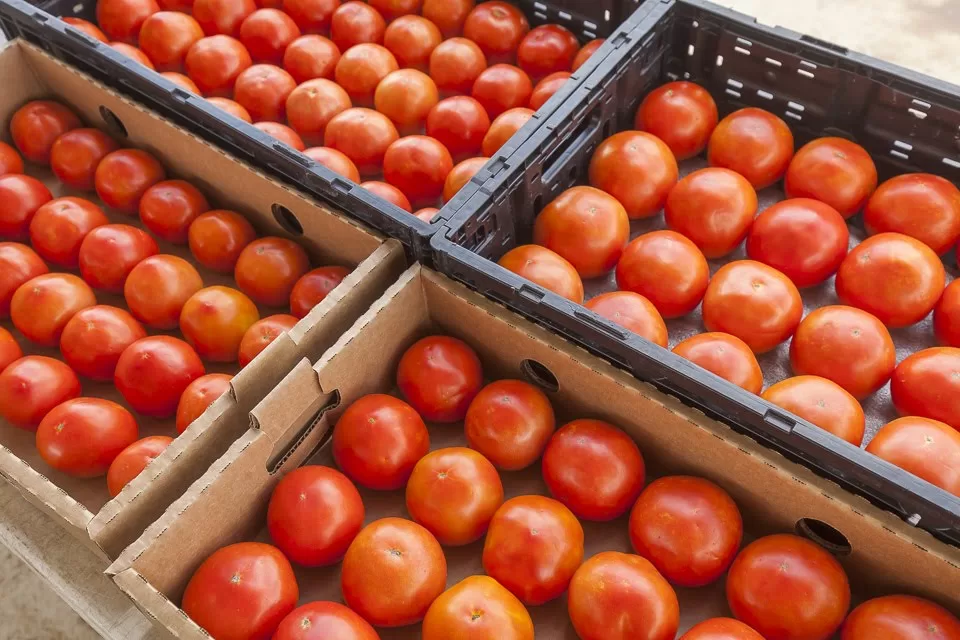
Harvesting
As your tomatoes ripen, pluck them from the vine when firm and fully colored. To encourage continued production, pick ripe tomatoes regularly and avoid leaving them on the plant for too long. Once harvested, tomatoes can be stored at room temperature or refrigerated, depending on their ripeness and desired use. And then, let your culinary imagination run wild with the endless possibilities tomatoes offer!
Tomato Diseases in Farming
Bacteria, fungi, viruses, or other pathogens can cause tomato diseases. These diseases can be transmitted through infected seeds, contaminated soil, or air.
Below are some common tomato diseases you may encounter in your tomatoes as a farmer :
- Early Blight: Early blight is a fungal disease that causes dark spots on leaves, stems, and fruit. It can weaken the plant and lead to reduced yields.
- Late Blight: Late blight is a devastating disease caused by a fungus, often favored by excellent, wet conditions. It can quickly spread and cause the plant to collapse.
- Septoria Leaf Spot: Septoria leaf spot is caused by a fungus and appears as small, dark spots with a light-colored center on tomato leaves. It can defoliate the plant and reduce fruit quality.
- Bacterial Spot: Bacterial spot causes dark, raised spots on leaves, stems, and fruit. It thrives in warm and humid conditions and can spread rapidly.
- Fusarium Wilt: Fusarium wilt is a soil-borne disease caused by a fungus. It causes yellowing, wilting, and eventual death of the plant.
How to Prevent Tomato Diseases
Tomatoes are a beloved vegetable in many home gardens and are a staple in numerous culinary dishes. However, tomato plants are susceptible to various diseases that can damage or even destroy your precious crop
Below are ways to prevent tomato diseases:
● Opt for tomato varieties that are resistant to common diseases. Check seed catalogs or consult with local gardening experts for recommendations.
● Avoid planting tomatoes or other nightshade family plants in the same area each year. Rotate your crops to reduce the build-up of pathogens in the soil.
● Remove any infected plant debris, including leaves or fruits affected by diseases. Do not compost these materials, as the pathogens can survive and spread.
● Plant your tomatoes with adequate spacing, as overcrowding can create a favorable disease environment. Good air circulation helps prevent the development and spread of diseases.
● Apply organic mulch around the base of the plants. Mulch helps retain soil moisture, reduces weed growth, and prevents soil-borne diseases from splashing onto the foliage.
● Water the tomato plants at the base, avoiding overhead watering. Wet foliage promotes the spread of diseases. Drip irrigation or a soaker hose system is ideal.
● Wash your hands or use gloves when handling tomato plants. This helps prevent the transmission of diseases from other plants or contaminated tools.
● Excessive nitrogen can encourage rapid foliage growth, making tomatoes more susceptible to diseases. Use a balanced fertilizer or one specifically formulated for tomatoes.
● Regularly inspect your plants for pests, as they can weaken their defenses and make them more susceptible to diseases. Use organic pest control methods whenever possible.
● Regularly check your tomato plants for signs of diseases. Early detection and immediate action can help prevent the spread and severity of infections.
wrap up
Tomato farming in Nigeria presents a highly profitable opportunity for farmers due to its high demand and ease of cultivation. By implementing proper preventive measures against common tomato diseases such as early and late blight, bacterial wilt, and fusarium wilt, farmers can minimize crop losses and maximize their profits.
Additionally, by adopting good agricultural practices such as crop rotation, sanitation, and selecting resistant varieties, farmers can ensure the long-term success and sustainability of their tomato farming ventures.
Protecting your tomato plants from diseases is essential for a successful and abundant harvest. Following the tips and strategies above, you can significantly reduce the risk of tomato diseases and enjoy healthy, flavorful tomatoes throughout the season. Remember that prevention is the key to maintaining the vitality of your tomato plants and maximizing their productivity
So, why wait? Start your tomato farming journey in Nigeria today and reap the rewards of this lucrative crop.
.

